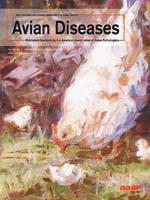Between 2006 and 2011 a series of disease conditions characterized by raised mortality and liver disorders occurred in turkey breeder flocks and in meat turkey flocks in Germany. The flocks were between 12 and 23 wk of age, and mostly hens were affected. Clinical signs were nonspecific and accompanied by mortality varying between 1% and 7%. Affected birds displayed swollen livers that were marbled with black and red spots and yellowish areas. The pericardium was filled with an amber fluid, and the coronary groove was extensively filled with fat. Spleens were swollen, and a serous fluid that seemed to leak from the liver was present in the body cavity. Histopathological findings in all but one case included fatty degeneration of hepatocytes with parenchymal collapse and associated hemorrhages. Some animals showed cholangitis and hepatitis with intranuclear inclusion bodies. In three cases with breeders, electron microscopy detected virus particles that were between 23 and 30 nm and similar to parvo- or picornavirus. In addition, picornavirus RNA was detected in the livers of one meat turkey flock. Investigations by PCR for circovirus, polyomavirus parvovirus, and aviadenovirus yielded negative results in all cases, but an aviadenovirus was isolated from livers twice and a reovirus from the intestines once. Supplementation with vitamin E and selenium seemed to improve the situation. The most likely diagnosis is lipidosis, a metabolic disorder with complex etiology, which has rarely been described in turkeys.
Reporte de Caso—Patología hepática asociada con aumento de mortalidad en parvadas de pavos reproductores y de engorde.
Entre 2006 y 2011 se presentaron una serie de enfermedades caracterizadas por aumento de la mortalidad y problemas hepáticos en parvadas de pavos reproductores y de engorde en Alemania. Las parvadas tenían entre 12 y 23 semanas de edad y en su mayoría las gallinas fueron las más afectadas. Los signos clínicos fueron inespecíficos y estuvieron acompañados por mortalidad que osciló entre el 1% y 7%. Las aves afectadas mostraron hígados inflamados que presentaban aspecto marmoleado con áreas amarillentas y puntos negros y rojos. El pericardio estaba lleno de un fluido de color ámbar, y el surco coronario estaba extensivamente lleno de grasa. Los bazos se observaron inflamados y un fluido seroso que parecía salir del hígado, estaba presente en la cavidad corporal. Los hallazgos histopatológicos en todos los casos menos en uno incluyen degeneración grasa de los hepatocitos con colapso del parénquima y hemorragias asociadas. Algunos animales mostraron colangitis y hepatitis con cuerpos de inclusión intranucleares. En tres casos con reproductores, la microscopía electrónica detectó partículas virales que oscilaban entre 23 y 30 nm, similares a parvo o picornavirus. Además, se detectó ARN de picornavirus en los hígados de una parvada de pavos de engorde. Las investigaciones por PCR para circovirus, parvovirus, poliomavirus y aviadenovirus mostraron resultados negativos en todos los casos, pero se aisló un aviadenovirus a partir de hígados dos veces y un reovirus de los intestinos en una vez. La suplementación con vitamina E y el selenio parecieron mejorar la situación. El diagnóstico más probable fue lipidosis, un trastorno metabólico con etiología compleja, que rara vez se ha descrito en pavos.





